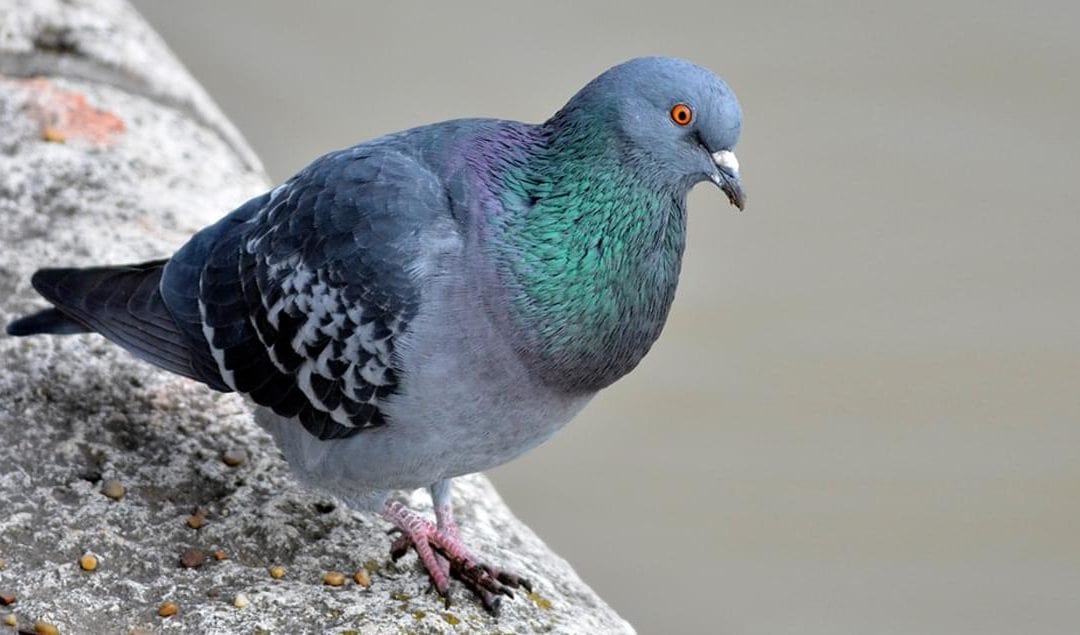“You’ve been flying for six years and you’ve thought ‘I’ve spent half my life asking where these things go’.”
Where do the pigeons go?
Mr Vanderveen said there were many theories within the pigeon racing fraternity, especially as to why some birds went missing.
“The magnetic pull of the Earth, solar flares, 5G towers, mobile phones — when you compact it all together it could be a bit of everything,” he said.
The Federal Government’s Australian Radiation Protection and Nuclear Safety Agency (ARPANSA) researches and monitors the effects of mobile phone towers.
Assistant director of the agency’s assessment and advice section, Ken Karipidis, has assessed the effects of radio waves on animals.
He said while birds use natural electromagnetic fields, or radio waves, to help with navigation, there was no research that showed the impact of radio or mobile phone towers on a bird’s orientation.
“Mobile phone towers and other wireless telecommunications sources, including 5G, emit low-level radiofrequency electromagnetic fields which are also called radio waves,” Dr Karipidis said.
“It’s well established that some animals, including birds such as pigeons, rely on natural electromagnetic fields as one of a number of parameters believed to be used for orientation and navigational cues.
“However, there is no established evidence that radio waves from telecommunications sources disrupt the orientation cues of animals which make use of a variety of mechanisms for orientation.”
But the president of the Queensland Racing Pigeon Federation, Wayne Reese, said he believed there may be a link.
“There has been a bit of upsurge in the number of birds that get lost, or get lost for a period of time,” he said.
“It could be phone towers and it pretty much coincides with that.
“It seems to have corresponded with around the time mobile phones started. We had a pick-up in the amount of losses.
“We don’t really know why [pigeons] know their way home so it could be something like [phone tower signals] that interferes with them.”
Man-made factors, natural predators to blame
Golo Maurer, from Birdlife Australia’s Key Biodiversity Areas project, said he was unaware of any evidence that signals from mobile phone towers disrupted a bird’s navigational sense.
Dr Maurer has done extensive studies into wild bird migration and believes variations in the Earth’s magnetic field could be sending pigeons off course.
But he believed urban development, resulting in habitat loss, was a more likely factor.
“Our landscape is more and more built-up … probably in the same timeframe that people have been worrying about pigeons not returning. We’ve lost 60 per cent of some native birds in some areas,” Dr Maurer said.
“It’s hard to think they’re not going to be entirely unaffected by the destruction of nature that has also affected their wild counterparts.”
Dr Maurer said urban development reduced the opportunities for pigeons to rest or feed en route, while window strikes, which kill millions of birds worldwide every year, could be another possibility.
He suggested the prevalence of natural predators had also increased, in particular the peregrine falcon, since the use of Dichlorodiphenyltrichloroethane (DDT) was banned.
Mr Vanderveen agreed.
“When you look at all the data that’s out there, the peregrine falcon is high on the list,” he said.
“They’re targeting pigeons. They’re not silly, they know the seasons that they come through.”
Fliers hopeful of return to racing
Pigeon racing is one of many sports to have its wings clipped due to the coronavirus pandemic, but news that Queensland’s social distancing rules are starting to relax has caused a flutter of excitement.
Travel restrictions made it especially hard for fliers to get their avian athletes race-fit, with training limited to the loft.
But Mr Vanderveen is grateful he can travel up to 50 kilometres from today.
“That’s part of the process … that’ll give them the fitness to fly back home,” he said.
“You do that a few times and that’ll give them the fitness to do a 100 kilometre race.”
Queensland’s racing season is traditionally launched in early May but will be pushed back until groups can gather.
Pigeon Patrol Products & Services is the leading manufacturer and distributor or bird deterrent (control) products in Canada. Pigeon Patrol products have solved pest bird problems in industrial, commercial, and residential settings since 2000, by using safe and humane bird deterrents with only bird and animal friendly solutions. At Pigeon Patrol, we manufacture and offer a variety of bird deterrents, ranging from Ultra-flex Bird Spikes with UV protection, Bird Netting, 4-S Bird Gel and the best Ultrasonic and audible sound devices on the market today.
Voted Best Canadian wholesaler for Bird Deterrent products ten years in a row.
Contact us at 1 877-4-NO-BIRD,(604) 585-9279 or visit our website at www.pigeonpatrol.ca
Pigeon/Pigeon Patrol / Pigeons Roosing / Vancouver Pigeon Control / Bird Spikes / Bird Control / Bird Deterrent / PIgeon Deterrent / Surrey Pigeon Control / Pest / Seagull deterrent / Vancouver Pigeon Blog / Birds Inside Home / Pigeons in the cities / Ice Pigeons / What to do about pigeons / sparrows, Damage by Sparrows, How to Keep Raccoons Away, Why Are Raccoons Considered Pests / De-fence / Pigeon Nesting / Bird Droppings / Pigeon Dropping / woodpecker control / Professional Bird Control Company / Keep The Birds Away / Birds/rats/seagull/pigeon/woodpecker/dove/sparrow/pidgeon control/pidgeon problem/pidgeon control/flying rats/pigeon problems/ bird netting/bird gel/bird spray/bird nails/bird guard

